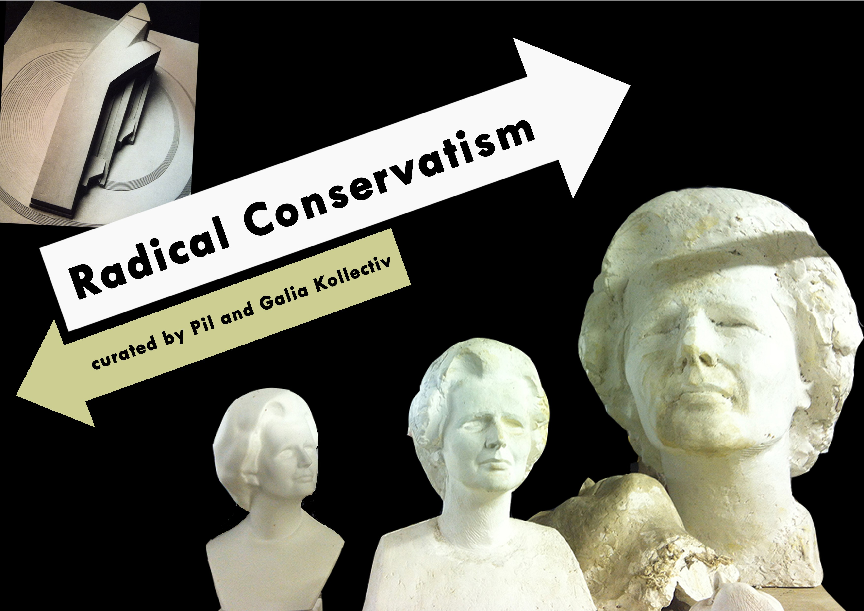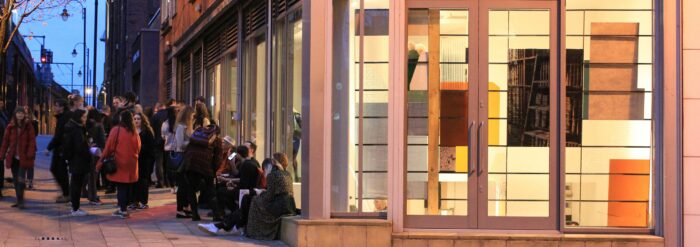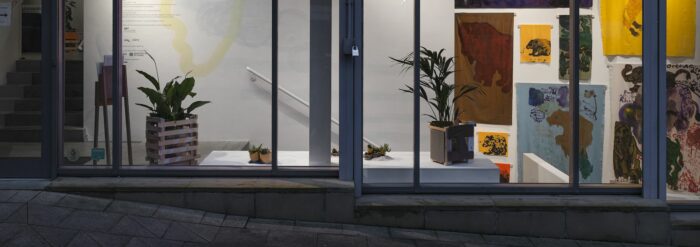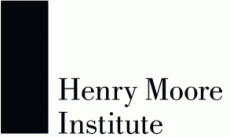
Radical Conservatism. Curated by Pil and Galia Kollectiv
Radical Conservatism. Curated by Pil and Galia Kollectiv
30 November 2013 - 02 February 2014
Castlefield Gallery is pleased to present Radical Conservatism, curated by Pil and Galia Kollectiv for its Art & Society strand of exhibitions. The exhibition includes works by Chris Evans (London); IRWIN group, founded in Ljubljana (Slovenia); Joseph Lewis (London); Patrick Moran editor of the metal fanzine Buried (London); Oscar Nemon (b. 1906 Osijek, Croatia d. 1985 Oxford, UK); Pil and Galia Kollectiv (London) and Public Movement (Israel).
In 1938, Yugoslav sculptor Oscar Nemon arrived in Britain, having fled the Nazi invasion of Brussels, where he was living with René Magritte. He was part of the European avant-garde that came to the UK as a refugee. Shortly thereafter, Nemon proposed a bold architectural plan to construct a temple of universal ethics in London and was in correspondence over this with central figures in Britain. After the war, he became known for his portrayal of figures like Churchill, culminating in a bust of Margaret Thatcher that is currently at the Tory HQ.
Radical Conservatism explores the space between these two moments and asks whether these two terms are really antithetical. In the British context in particular, where the European avant-garde never really took hold, a kind of reactionary modernism has always defined a culture wary of revolution. But today more than ever, with the left increasingly holding on to the past of the welfare state as an ideal, and the right quietly revolutionising our world through neoliberal reforms, the paradigms of radicalism and conservatism need to be redefined. Can conservatism be seen as a radical position in itself? If art is defined by a movement towards the new – could ‘holding on to the past’ stubbornly be seen as a critical position, now that neo-liberalism has forced a far more radical shift in politics than the left has managed in a long time?
About the artists:
Oscar Nemon (b. 1906 Osijek, Croatia d. 1985 Oxford, UK) After studying at the Royal Academy of Fine Art in Brussels, where he shared flat with René Magritte, he settled in England. His technique depended on modeling from life directly in clay, quickly making many small studies with no preliminary drawings. He designed his own home and studio, an unlikely modernist edifice in Oxfordshire named Pleasant Land, which currently houses many studies and models for his finished works.
The IRWIN group was founded in Ljubljana (Slovenia). Its members are Dusan Mandic, Miran Mohar, Andrej Savski, Roman Uranjek and Borut Vogelnik. IRWIN, along with the music group Laibach (1980), the performance group Gledalisce Sester Scipion Nasice (1983), later known as the Kozmokineticni Kabinet Noordung, and the design department Novi Kolektivizem, comprises one of the core groups within the artists’ collective Neue Slowenische Kunst (NSK), established in 1984 in the Slovenian republic of the Federal Socialist Republic of Yugoslavia. IRWIN is committed to the so-called ‘retro-principle’ which is “not a style or an art trend but a principle of thought, a way of behaving and acting” (IRWIN). In its artistic projects the group IRWIN has been involving itself extensively with the art history of Europe, in particular with the ambivalent inheritance of the historical avant-gardes and its totalitarian successors, and thus with the dialectic of avant-garde and totalitarianism. At Castlefield Gallery, IRWIN will be showing two ‘IRWIN framed’ icons from their 2012 project, Was ist Kunst Hugo Ball, alongside a large-scale photograph of Bishop Metodij Zlatanov, Christian-Orthodox Metropolitan of Macedonia, produced specifically for this exhibition and showing him holding in his hands an original Dada work from the Kunsthaus Zürich as if it was an icon in a procession. According to IRWIN, icons do not reconstruct reality as if someone were lookin through a window into a different world. Rather, by adhering to strict rules, their painters succeed in fixing in an image the actual presence of holiness. Icons are ritualistic tools which do not represent holiness but are the substance itself, thus giving direct access to divinity. Their function as ritualistics tools brings icons very close to what Hugo Ball tried to achieve with Dada. Dada was neither a ‘style’ nor a ‘movement of art’, but a gesture Ball thought would help him obtain mystic insights. He conceived of this notion the night he was intoning phonetic poems in the guise and voice of a bishop. The project thus literally reframes Dada as a modern orthodoxy.
Public Movement is a performative research body that investigates and stages political actions in public spaces. It studies and creates public choreographies, forms of social order, overt and covert rituals, including fictional acts of hatred, new folk dances and synchronized procedures of movement. For Radical Conservatism, Public Movement are
showing news footage of recent performances Honor Guard and University Exercise. Debriefing Session a one on one performance action will also take place in a Manchester City Centre, hotel lobby (see reverse for more info). This performance adopts the form of a diplomatic engagement between individuals to explore the intricate and often concealed ties between cultural institutions, funding bodies and political agendas.
Honor Guard, Public Movement worked with the Veteran Honor Guard of Taiwan to present a new state choreography, inviting spectators to pay respect to Taiwan’s past, present and future and to the beauty of order. A weekly ceremonial performance of patriotic pride took place at the entrance to Chaing Kai-Shek Memorial Hall, Taipei.
University Exercise, Public Movement occupied the University of Heidelberg’s main building and University Square. In the 1970s, following sustained violent student riots with police leading to arrests and injuries, Universities in Germany were declared as autonomous spaces where state officials cannot enter unconditionally and any performance of state violence is forbidden. This was understood as a way to guarantee academic freedom and the constitutional rights to freedom of expression and assembly. Since then, police cannot enter university territory without the explicit invitation of the head of the university.
Chris Evans (b. 1967 Eastrington, East Yorkshire) His work often evolves through conversation with people from diverse walks of life, selected in relation to their public life or symbolic role: the directors of a leading champagne house, a former member of the British Constructivists, the CEO of a Texas pharmaceutical company, a selection of elderly Italian politicians etcetera. Sculptures, letters, drawings, film scripts and unwieldy social situations created as a result of this, are indexes of a larger structure through which Evans deliberately confuses the roles of artist and patron, genius and muse. Evans will be showing his video COMPANY (2009). Taking direction from Allan Kaprow’s score Company, an interview is set up with Walid El Kafrawy, Chief Executive of ofok (Arabic for “horizon”) – a construction company dedicated in the conception of new communities in the Egyptian desert’s “intimate serenity”. From this a script is co-authored with Will Bradley and edited by El Kafrawy. The latter recites his own words to the camera in blocks, fed back to him through an earpiece – over images of ofok construction: a year-long transformation, “through people”, from “dust and flies” to a “nurturing community”. The discourse of the property developer turns the gated community into a utopian project. Evans will also present a performative event entitled ‘Work in progress for rebranding Pepsi Cola by Arnell Group, and other exercises in public presentation’ (2013). This is a presentation on design, with invited guest, on questions of rebranding, produced in collaboration with Dexter Sinister, Marina Vishmidt, and Massimiliano Mollona.
Pil and Galia Kollectiv are London based artists, writers and curators working in collaboration. Their work addresses the legacy of modernism and explores avant-garde discourses of the twentieth century and the way they operate in the context of a changing landscape of creative work and instrumentalised leisure. Pil and Galia Kollectiv’s prints from their Future Monument series present proposals for a monument to the future crimes of capitalism inspired by the form of the yacht. It has often been remarked that the late capitalist operations of financialisation have no concrete visual language. Global finance is a liquid, smooth motion that paradoxically de-territorialises and concentrates wealth like a swarm of fractional arithmetic components, both menacing and immaterial. But if its true nature is an elusive, constantly mutating entity, then yachts serve as a fictionalization of its core essence, a testament to the conditions under which we live. As repositories of capital, they are fascinating because they make concrete the invisible flows of finance. Their display of power and status is inverted in their sheer visibility. Ignoring what goes on inside, we are treated to a spectacle of architecture in motion, evoking the impermanence to which the postmodern monument aspires.
Joseph Lewis’ hurdy gurdies chart an alternative folklore of the British Isles. Produced through a rigorous study of ancient craft traditions and folk symbols, these instruments are nevertheless a celebration of an anarcho-democratic and carnivalesque tradition – a surplus that cannot be contained by the pacifying framing of British heritage in the tourist industry. Sonically, the instruments also occupy an ambiguous position: while their sound can be associated with ‘twee’ folk festivals, they also produce a noisy drone that corresponds to notions of avant-garde composition. For this exhibition, Lewis will show three wooden positiv churches: a hurdy gurdy, a church tool box and a church library. These alternative relic chests symbolise the hidden popular knowledge and labour interred in churches and the Christian faith. A performance illustrating the ritual use of the hurdy gurdy accompanies the exhibition.
Buried is a metal Fanzine that rejects Xerox zine aesthetics to deliver something akin to a medieval text. Consequently, each issue is entirely printed by hand, and bound into a hardback book filled with original illustrations and Gothic fonts, exploring the tension between the formal strict generic constraints of metal and its transgressive preoccupations. There are 3 editions of Buried, the first looking at One Man Black Metal Bands, the second a more general study of Black Metal and the third was a survey of the Brutal Death Metal scene in the UK. Issue 4 will be launched at Castlefield Gallery.
PREVIEW: Friday 29 November 6-8pm – All Welcome
Christmas Closing: Mon 23 Dec 2013 to Tues 7 Jan 2014. The gallery will reopen on Wed 8 Jan 2014.
A model of Oscar Nemon’s proposed Temple of Universal Ethics is lent with the kind permission of the Henry Moore Institute.
Castlefield Gallery would like to thank the Double Tree Hilton, Manchester, Galerija Gregor Podnar, Henry Moore Institute and the Oscar Nemon Trust for supporting the Radical Conservatism exhibition.



